THE BRIDAL DISH
FRESH AND NATURAL
Est. 2023
100% Plant based organic food
Lorem ipsum dolor sit amet, consectetur adipiscing elit, sed do eiusmod tempor incididunt ut labore et dolore magna.
Felis eget nunc lobortis mattis aliquam faucibus purus in massa. Eget mi proin sed libero enim sed faucibus turpis in. Ornare arcu odio ut sem nulla. Convallis convallis tellus id interdum velit.
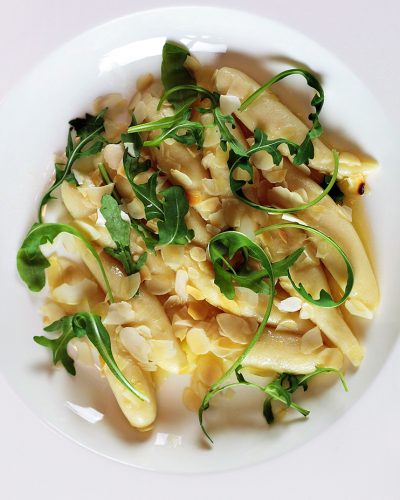

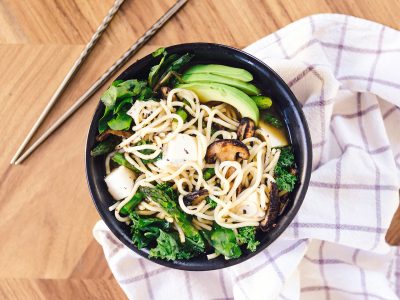
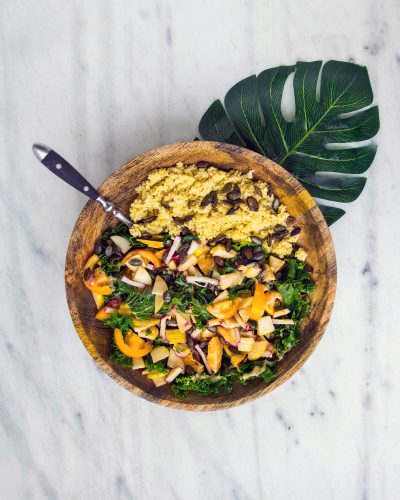
What Is The Most Famous French Dinner?
There is one supper that stands out as the essence of French gastronomy, and that is the classic French dinner. French cuisine is known all over the world for its sophistication, richness, and delicacy, and among its numerous gastronomic delights, there is one evening that stands out.
With its painstakingly planned courses, artistic presentation, and concentration on fresh, seasonal ingredients, this renowned dining experience exemplifies the spirit of the French culinary culture. Come along with us as we delve into the appeal and refinement of the most famous French meal, where each mouthful is a trip through the flavours that have been passed down through the culinary legacy of France.
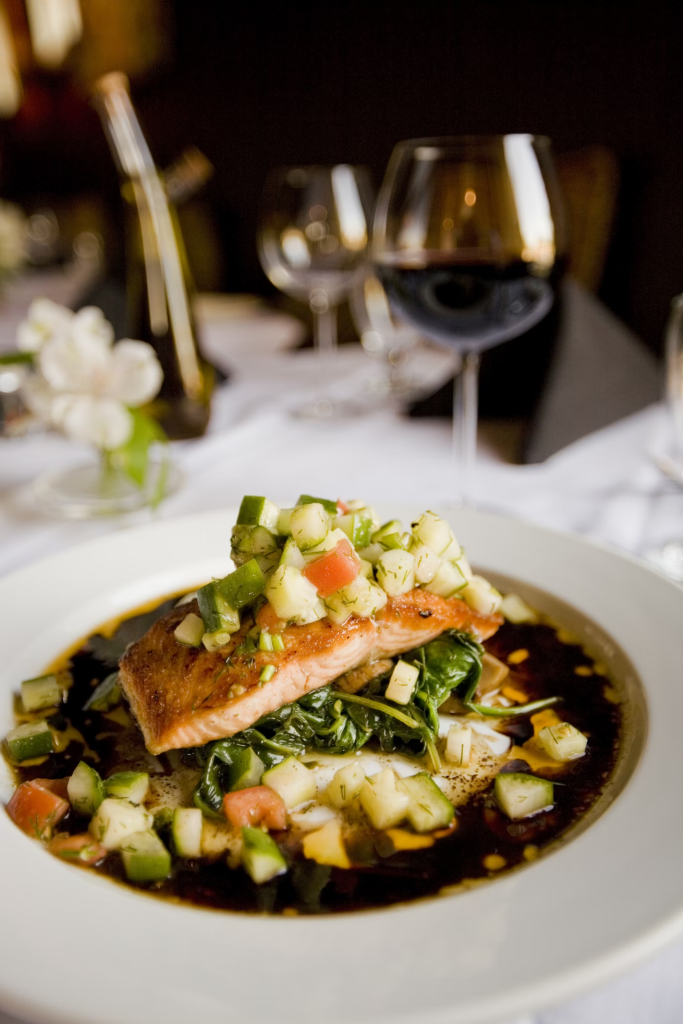
What Is The Most Famous French Dinner?
Perhaps the most well-known French supper is “Le dîner gastronomique à la française,” also known as “The French Gastronomic Dinner.” It’s more like a multi-course meal with a variety of dishes such as hors d’oeuvres, soup, meat, fish, cheese, dessert, and coffee rather than just one dish. This lavish meal provides a demonstration of the variety, complexity, and wealth of French food.
Careful preparation goes into each meal, which frequently showcases seasonal delicacies and regional specialities; wines are chosen to enhance the flavours. Guests at the French Gastronomic Dinner are invited to partake in a multi-sensory extravaganza honouring the culinary arts, French heritage, and the joys of sharing a meal with friends and family.
Here’s a breakdown of a traditional French Gastronomic Dinner:
- Hors d’oeuvres (Appetizers): The meal typically begins with a selection of small, savoury bites served as appetizers. This could include items like pâté, terrine, smoked salmon, or a variety of canapés.
- Soup: Following the appetizers, a warm and comforting soup is often served. Classic options include French onion soup, vichyssoise (potato and leek soup), or bouillabaisse (a traditional Provençal fish stew).
- Fish Course: Next comes a seafood dish, showcasing the bounty of the sea. This could be a delicate fillet of fish, such as sole or sea bass, prepared with a flavorful sauce and accompanied by seasonal vegetables.
- Meat Course: The main course typically features meat, such as beef, lamb, poultry, or game, prepared in a variety of ways. Coq au vin (chicken braised in wine), boeuf bourguignon (beef stewed in red wine), or duck confit are classic examples.
- Cheese Course: A selection of fine cheeses from various regions of France is often presented after the main course. This course allows diners to savour the distinct flavours and textures of different cheeses, accompanied by crusty bread or crackers.
- Dessert: The meal culminates with a decadent dessert, showcasing French pastry craftsmanship. This could be a classic like crème brûlée, tarte Tatin, mille-feuille, or a selection of petits fours.
- Coffee and Digestifs: Finally, the meal concludes with coffee or espresso, often served alongside a selection of digestives such as Cognac, Armagnac, or liqueurs like Grand Marnier or Chartreuse. These help aid digestion and provide a satisfying end to the dining experience.
Throughout the dinner, great care is taken to pair each course with appropriate wines, chosen to enhance the flavours of the food and elevate the overall dining experience. The French Gastronomic Dinner is not just about sustenance; it’s a celebration of culinary artistry, culture, and conviviality that embodies the essence of French gastronomy.
Where To Find The Best French Restaurant In Sydney?
Determining the “best” French restaurant in Sydney can be subjective and depends on individual tastes and preferences. However, there are several highly regarded French restaurants in Sydney known for their authentic cuisine, ambience, and service. Here are a few options for the best french restaurant sydney:
- Felix Restaurant: Located in the heart of Sydney’s CBD, Felix Restaurant offers a classic French brasserie experience. With its elegant Parisian-inspired décor and a menu featuring traditional French dishes like steak frites, bouillabaisse, and escargot, Felix captures the essence of French dining.
- Hubert: This underground French bistro transports diners to 1930s Paris with its dimly lit ambience, vintage décor, and live jazz music. Hubert’s menu features French classics with a modern twist, including coq au vin, duck confit, and steak tartare.
- Bistro Moncur: Situated in Woollahra, Bistro Moncur is a cozy neighbourhood bistro known for its refined French cuisine and warm hospitality. The menu showcases French-inspired dishes made with locally sourced ingredients, and the restaurant offers an extensive wine list featuring French and Australian wines.
- Est: With its chic dining room and innovative French-inspired menu, Est is a favourite among Sydney’s culinary enthusiasts. Located in the Establishment Hotel, Est offers a fine dining experience with dishes like foie gras parfait, lobster bisque, and confit duck leg.
- Bistro Rex: This charming bistro in Potts Point offers a relaxed atmosphere and a menu featuring French classics made with seasonal Australian produce. Diners can enjoy dishes like bouillabaisse, steak tartare, and coq au vin in a stylish yet unpretentious setting.
These are just a few options to consider, but there are many other excellent French restaurants in Sydney worth exploring. It’s always a good idea to check reviews, ask for recommendations, and make reservations in advance, especially for popular dining spots.
Is French Restaurant Worth It?
Whether a French restaurant is “worth it” depends on various factors, including personal preferences, budget, and the specific restaurant in question. Here are some points to consider:
- Cuisine and Experience: French cuisine is renowned for its sophistication, flavour, and technique. Dining at a French restaurant can provide an opportunity to indulge in classic dishes prepared by skilled chefs who specialize in French culinary traditions. The experience can be particularly enjoyable for those who appreciate fine dining and are interested in exploring different flavours and ingredients.
- Ambience and Atmosphere: French restaurants often pride themselves on creating an elegant and intimate dining environment. From cozy bistros to upscale fine dining establishments, the ambience and atmosphere can contribute significantly to the overall dining experience, making it worth it for those seeking a special occasion or romantic night out.
- Quality of Ingredients and Service: Many French restaurants prioritize using high-quality, fresh ingredients and providing attentive service to ensure a memorable dining experience. This attention to detail can justify the higher prices often associated with dining at French restaurants.
- Cost Considerations: Dining at a French restaurant can be more expensive compared to eating at casual dining establishments. However, for some people, the culinary experience, ambience, and level of service justify the cost. It’s essential to consider your budget and what you’re comfortable spending on dining out.
- Personal Preferences: Ultimately, whether a French restaurant is worth it depends on individual preferences and priorities. Some diners may prefer the simplicity and affordability of casual dining, while others may enjoy the sophistication and indulgence of a fine dining experience.
Dining at a French restaurant can be worth it for those who appreciate the cuisine, ambience, and overall experience it offers. However, it’s essential to consider factors such as cost, personal preferences, and occasion when deciding whether to dine at a French restaurant.
Conclusion
French restaurants provide a one-of-a-kind eating experience that is distinguished by the excellent cuisine, stylish atmosphere, and attentive service featured in these establishments.
Customers may anticipate indulging in traditional French cuisine that is made with both high-quality ingredients and a high level of culinary expertise, regardless of whether they are dining at a quaint cafe or an upmarket fine dining restaurant.
Even though dining in French restaurants may come with a higher price tag, many people believe that the opportunity to experience exquisite flavours, take pleasure in elegant surroundings, and make memories that will last a lifetime justifies the investment.
The ultimate determination of whether or not a French restaurant is worth the expense is contingent upon the tastes of the individual, the constraints of the budget, and the desire to have a unique dining experience.
What Is The Most Popular Pizza In Australia?
Discovering the pizza that is most popular in Australia can be as varied as the country’s environment. From the crowded streets of Melbourne to the sandy coasts of Sydney, Australians have acquired a distinct taste for this well-liked Italian dish.
This is because of the country’s diverse cultural backgrounds. Come along with us as we explore the enticing world of Australian pizza culture, during which we will discover the flavours and ingredients that have won the hearts (and stomachs) of pizza aficionados all around the country.
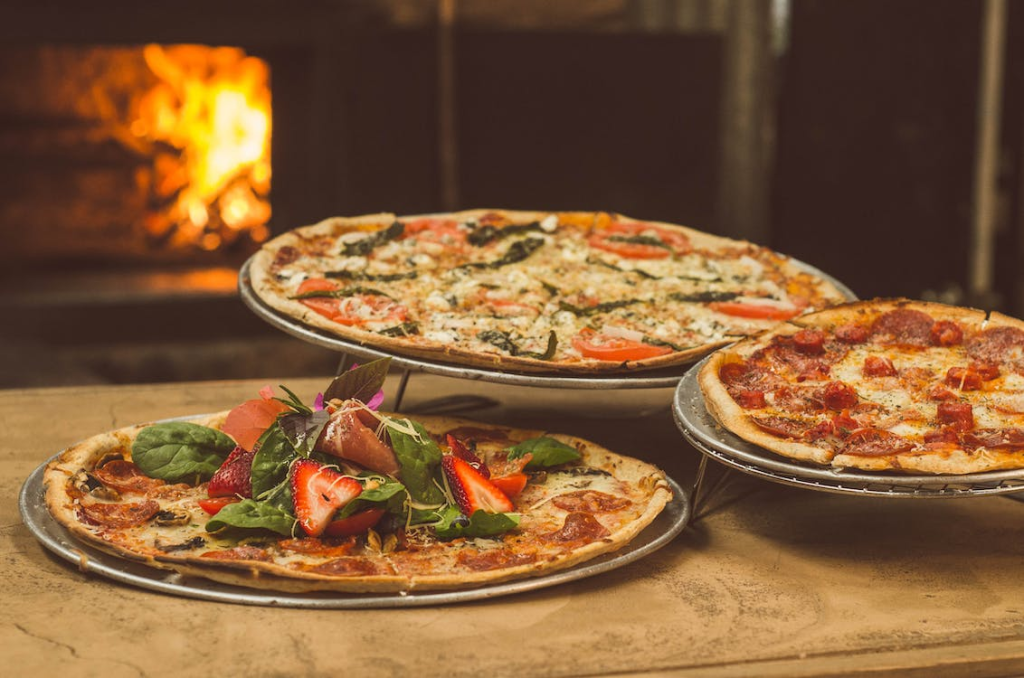
Pizza | What Is It?
Pizza has captured the hearts and stomachs of people all around the globe. A classic pizza, with its round, pressed dough foundation, tomato sauce, cheese, and an assortment of toppings like meats, veggies, and herbs, has its origins in Italy. The classic recipe calls for wheat flour, water, yeast, and salt to make the dough, which, when heated in an oven, turns into a crust that is chewy and crispy at the same time.
Although traditional pizzas like Margherita and Pepperoni continue to sell well, pizza’s adaptability encourages ingenuity in the kitchen and beyond as people try new toppings and flavour combinations. Whether it’s a fast and easy dinner, the showpiece at parties, or a cosy treat, pizza has always had a unique place in culinary history, drawing people together across countries and cultures.
What Is The Most Popular Pizza In Australia?
It’s challenging to pinpoint a single pizza as the absolute most popular across all of Australia, as preferences can vary greatly depending on region and individual taste. However, some classic favourites and popular choices include:
- Margherita: A timeless classic featuring tomato sauce, mozzarella cheese, fresh basil, and sometimes a drizzle of olive oil. Its simplicity and balanced flavours make it a popular choice among pizza lovers.
- Supreme: Loaded with toppings such as pepperoni, mushrooms, onions, bell peppers, and olives, the Supreme Pizza offers a hearty and satisfying option for those who enjoy a variety of flavours and textures on their pizza.
- Hawaiian: This divisive pizza features ham (or Canadian bacon) and pineapple, creating a sweet and savoury flavour combination that has its fair share of fans and detractors. Despite the controversy, it remains a popular choice in many Australian pizzerias.
- BBQ Chicken: Topped with barbecue sauce, grilled chicken, onions, and sometimes bacon or sweetcorn, the BBQ Chicken pizza offers a smoky, tangy twist on the traditional pizza that appeals to many Australians.
- Meat Lovers: Packed with a variety of meats such as pepperoni, sausage, bacon, and ham, the Meat Lovers pizza is a carnivore’s dream. Its rich and savoury flavours make it a popular choice for those craving a hearty and indulgent meal.
These are just a few examples, and the popularity of specific pizzas can vary depending on local preferences and trends. Additionally, with the rise of artisanal pizza shops and creative chefs, new and innovative pizza creations continue to emerge, adding to the diverse pizza landscape in Australia.
What Is An Australian Pizza?
In common parlance, an Australian pizza has been tweaked or altered to reflect local preferences. Pizza in Australia has its origins in Italian cooking, but the varied influences on the country’s cuisine mean that each pizza is unique. This is especially true when it comes to the toppings and flavour combinations. Pizzas from Australia typically have the following features:
- Inventive Toppings: Australian pizzas often feature a wide range of toppings beyond traditional Italian options. This can include ingredients like barbecue sauce, chicken, prawns, pineapple, and even egg, reflecting the diverse culinary influences in Australia.
- Meat-heavy Options: Many Australian pizzas are known for their generous portions of meat toppings, catering to the country’s love for hearty and filling meals. Popular choices may include combinations like pepperoni, bacon, ham, sausage, and various types of chicken.
- Fusion Flavors: Australian pizzas may incorporate flavours from other cuisines, resulting in unique fusion pizzas. For example, pizzas inspired by Asian, Middle Eastern, or American cuisines can be found on menus across Australia, offering a diverse range of taste experiences.
- Creative Combinations: Australian chefs and pizzerias often experiment with unconventional flavour pairings and ingredients, resulting in creative and innovative pizza offerings. This can include combinations like pumpkin and feta, smoked salmon and avocado, or lamb and tzatziki.
- Local Specialties: Some regions in Australia have their specialty pizzas that reflect local ingredients or culinary traditions. For example, seafood pizzas may be more prevalent in coastal areas, while inland regions might feature pizzas inspired by bush tucker or native Australian ingredients.
There is a thriving and ever-changing pizza culture in Australia, thanks in large part to the pizzas’ acceptance of variety, inventiveness, and experimentation.
Why Is Pizza Popular?
Pizza’s popularity can be attributed to several factors:
- Versatility: Pizza is incredibly versatile and can be customized with a wide range of toppings, sauces, and cheeses to suit individual preferences. This versatility appeals to a broad audience, making it a favourite choice for gatherings and events where different tastes need to be accommodated.
- Convenience: Pizza is widely available and convenient to order or make at home. With the proliferation of pizzerias, fast-food chains, and delivery services, getting pizza has never been easier. Its convenience makes it a popular option for quick meals or when cooking at home feels like too much effort.
- Affordability: Pizza is often seen as an affordable dining option, especially when compared to other restaurant meals. Its relatively low cost makes it accessible to a wide range of people, including families, students, and individuals on a budget.
- Social Appeal: Pizza is often associated with social gatherings, parties, and shared meals. Its large size and ability to be sliced into portions make it ideal for feeding groups of people, fostering a sense of community and conviviality.
- Comfort Food: Pizza’s combination of bread, cheese, and savoury toppings creates a comforting and satisfying eating experience. Its familiarity and indulgent flavours make it a go-to choice for people seeking comfort or a treat.
- Cultural Influence: Pizza has become a global phenomenon, transcending its Italian origins to become a beloved food in countries around the world. Its cultural influence spread through movies, television, and advertising, has helped cement its popularity in diverse societies.
- Marketing and Innovation: Pizza brands and restaurants continually innovate and market their products to appeal to changing consumer preferences. From new topping combinations to innovative crusts and delivery methods, these efforts help keep pizza relevant and appealing to consumers.
Overall, the combination of versatility, convenience, affordability, social appeal, comfort, cultural influence, and marketing efforts has contributed to pizza’s enduring popularity worldwide.
Conclusion
Pizza’s continued success can be ascribed to several factors, including its adaptability, affordability, social appeal, comfort, cultural influence, and the industry’s ongoing commitment to innovation. From its humble beginnings in Italy to its current status as a global culinary sensation, pizza continues to fascinate taste buds and bring people together all over the world with its ability to bring people together.
Pizza has a special place in the hearts (and stomachs) of millions of people, whether it is consumed as a quick supper on a hectic evening, as the centrepiece at a social event, or as a comforting indulgence during times of stress. Because of its capacity to accommodate a wide range of preferences and fashions, it is certain to continue to be a well-liked and popular choice for many years to come.
Looking for more information? Click this guide “best pizza perth”.
Is Paleo Good For Losing Weight?
The Paleo diet, which takes its cues from the diets of our ancestors who lived during the Palaeolithic period, has acquired a lot of popularity in the ever-evolving world of diet fads because it emphasizes going back to the fundamentals.
Some people who advocate for the Paleo diet believe that following a diet that emphasizes the consumption of whole, unprocessed foods can result in significant weight loss as well as improvements in general health.
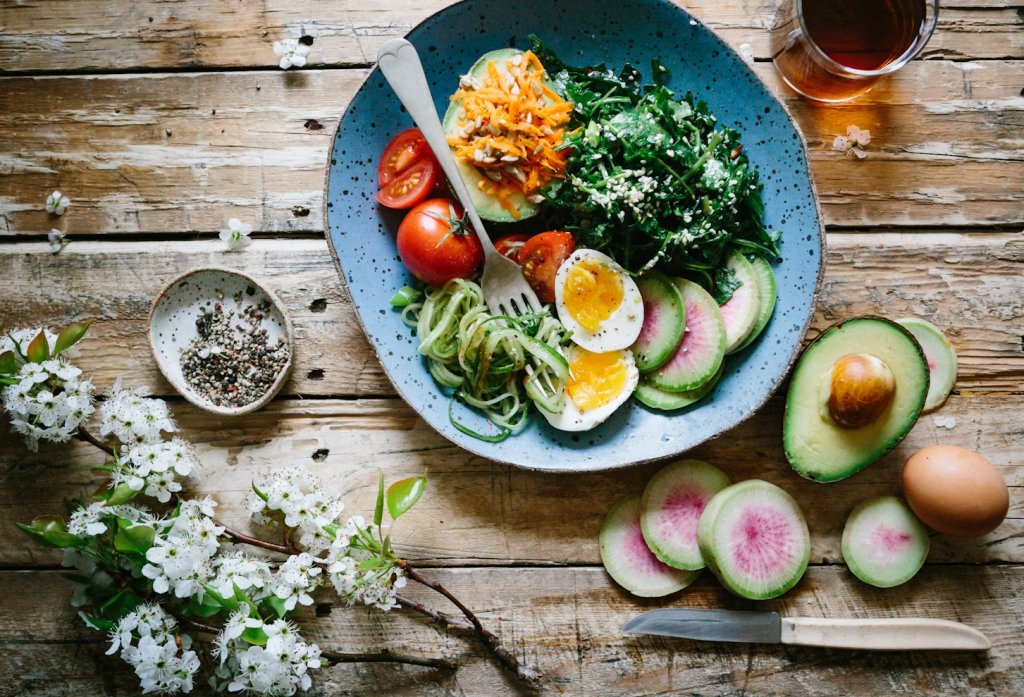
In this article, the fundamentals of the Paleo diet are dissected, including its benefits and drawbacks, as well as the potential effectiveness of the diet as a weight loss strategy.
We hope that by the time we finish this investigation into primal nutrition, we will have a better understanding of the science that underpins the Paleo diet and will be able to assess whether or not it is a viable and sustainable option for anyone who is experiencing weight loss in the modern world.
Is Paleo Good For Losing Weight?
Eating foods that our Palaeolithic ancestors may have eaten is the foundation of the Paleo diet, sometimes referred to as the Caveman or Palaeolithic diet. Lean meats, fish, fruits, vegetables, nuts, and seeds are usually included in the diet, but processed foods, grains, legumes, dairy products, and refined sugars are usually avoided.
Even though a lot of people who support the Paleo diet say it helps people lose weight and improves their general health and well-being, it’s important to approach any diet critically.
The following elements should be taken into account when evaluating the Paleo diet’s possible effects on weight loss:
High in Nutrient-Dense Foods: The Paleo diet encourages the consumption of whole, nutrient-dense foods, which can contribute to satiety and potentially lead to reduced calorie intake.
- Protein Emphasis: The diet is often rich in protein, which can help with weight management by promoting feelings of fullness and supporting muscle maintenance during weight loss.
- Reduced Processed Foods: By eliminating processed and refined foods, individuals may naturally reduce their calorie and sugar intake, contributing to weight loss.
- Potential for Improved Insulin Sensitivity: Some studies suggest that the Paleo diet may improve insulin sensitivity, which could be beneficial for weight management.
However, it’s crucial to consider the following aspects:
- Caloric Intake: Weight loss ultimately comes down to consuming fewer calories than you burn. While the Paleo diet can be nutrient-dense, it’s still possible to overeat and hinder weight loss.
- Individual Variation: The effectiveness of any diet varies among individuals. Factors such as genetics, activity level, and overall health can influence how the body responds to different dietary approaches.
- Sustainability: Long-term adherence to the Paleo diet may be challenging for some individuals due to its restrictive nature, potentially leading to difficulty maintaining weight loss over time.
- Nutrient Balance: Excluding entire food groups may pose challenges in meeting certain nutrient needs. It’s essential to ensure a balanced intake of vitamins, minerals, and other essential nutrients.
A registered dietician or other healthcare provider should be consulted before beginning any diet, including the Paleo diet. Based on each person’s tastes, underlying medical issues, and health goals, they can offer tailored advice. A balanced diet and consistent exercise are also essential for reaching and keeping a healthy weight.
What Are The Benefits Of Paleo?
Proponents of the Paleo diet believe that it is consistent with the presumed dietary patterns of our Palaeolithic ancestors, which is just one of the reasons why the Paleo diet is frequently touted for its possible health benefits. Even though different people may have different reactions to the diet, the following are some of the potential advantages connected with the Paleo diet:
Whole foods that are rich in nutrients:
- The diet encourages the consumption of whole foods, such as fruits, vegetables, lean meats, fish, nuts, and seeds, which are rich in essential nutrients, fibre, and antioxidants.
- Elimination of Processed Foods: By excluding processed foods, refined sugars, and grains, the Paleo diet may lead to a reduction in the intake of additives, preservatives, and highly processed ingredients.
- Protein Emphasis: The diet typically includes a higher intake of protein from animal sources, which can contribute to muscle maintenance, satiety, and overall body function.
- Improved Blood Sugar Control: Some studies suggest that the Paleo diet may help improve blood sugar control and insulin sensitivity, potentially benefiting individuals with conditions like insulin resistance.
- Weight Management: The emphasis on whole, nutrient-dense foods and the avoidance of processed and refined foods may contribute to weight management for some individuals.
- Reduced Inflammation: The focus on anti-inflammatory foods, such as fruits and vegetables, may contribute to a reduction in inflammation in the body.
- Better Digestive Health: The avoidance of grains and legumes, which contain certain anti-nutrients, may be beneficial for individuals with specific digestive sensitivities.
- Increased Nutrient Absorption: Some proponents argue that eliminating grains, legumes, and dairy may enhance nutrient absorption by reducing potential interference from anti-nutrients.
It is important to note that even though these potential benefits are commonly discussed, there is a lack of consensus among scientists regarding the scientific evidence that supports the Paleo diet’s superiority over other dietary regimens and its ability to be effective over the long run.
Individual responses to the diet can also vary, and due to the constraints that the Paleo diet imposes, it may be challenging for certain groups, such as vegetarians or those who have specific medical conditions, to obtain all of the nutrients that they require from the diet.
Before making significant alterations to one’s diet, it is highly recommended to consult with medical doctors or certified dietitians. They may provide advice that is specific to your objectives, present health state, and any underlying medical concerns you may have.
Conclusion
A growing number of people are adopting the Paleo diet because of its emphasis on eating foods that are raw and whole, as well as its benefits for managing weight. People who adopt a Paleo lifestyle may find it easier to lose weight since it emphasizes lean proteins, fruits, vegetables, nuts, and seeds while excluding refined and processed foods from their diet.
The diet’s high protein and nutrient-dense foods may cause people to experience feelings of fullness, which may result in a reduction in the total number of calories consumed by the individual.
Furthermore, the exclusion of some food groups, particularly processed and sugary foods, is consistent with beliefs that encourage weight loss and increased metabolic health. This makes the elimination of these food groups a viable option.
On the other hand, it is essential to employ a well-rounded strategy when following the Paleo diet. Some individuals may be able to effectively achieve their weight loss goals by utilizing this technique; however, it may be challenging for others to adhere to it for a prolonged period because it is restrictive.
Furthermore, the effectiveness of the Paleo diet varies from person to person; hence, it is essential to take into consideration personal factors such as heredity, the level of exercise one engages in, and overall health.
To ensure that one’s nutritional needs are met and that the diet plan of choice is under one’s own health goals, it is recommended that one consult with medical specialists or trained dietitians before beginning any diet.
Looking for more information? Click paleo cafes melbourne cbd now!
Which Food Is Melbourne Famous For?
Melbourne, Australia, is a culinary haven and cultural mecca on the country’s southern coast. This city’s mouthwatering cuisine is a reflection of the multicultural makeup of its residents and has earned it a reputation as a gastronomic mecca. Melbourne is home to a wide variety of cuisines, from filling breakfasts to creative brunches, cosmopolitan street food to fine dining.

Join us on a culinary adventure as we delve into the diverse food scene of Melbourne, highlighting the dishes and treats that have become the city’s signature cuisine. Take a virtual tour with us into Melbourne’s alleys, its hidden restaurants, and its busy markets, where the city’s renown as a culinary Mecca is a celebration of diversity and invention as much as it is a question of taste.
Prepare to be amazed by the hidden gems of Melbourne’s cuisine that will make your culinary bucket list soar.
Which Food Is Melbourne Famous For?
If you’re looking for a city with a vibrant and varied food culture that will satisfy any craving, go no further than Melbourne. Melbourne is well-known for its many delectable dishes, including:
- Flat Whites and Specialty Coffee: Melbourne has earned its reputation as the coffee capital of Australia. With an abundance of specialty coffee shops and a strong emphasis on quality beans and unique brewing techniques, the city has become a haven for coffee connoisseurs.
- Avocado Smash: A staple on many Melbourne brunch menus, avocado smash is a popular dish featuring mashed avocado on toast, often accompanied by additional toppings such as poached eggs, feta, or smoked salmon. This dish symbolizes the city’s love for healthy and delicious brunch options.
- Pies: Traditional Australian meat pies are a classic comfort food in Melbourne. Whether enjoyed at a local bakery, a footy game, or a casual eatery, these savoury pastries filled with minced meat and savoury gravy have become an iconic part of Melbourne’s food culture.
- Dim Sum and Dumplings: Melbourne’s Chinatown is a hub for delectable dim sum and dumplings. From traditional Cantonese flavours to modern twists, the city offers an extensive range of dumpling options, making it a paradise for dim sum enthusiasts.
- Italian Cuisine in Lygon Street: The Italian community has left an indelible mark on Melbourne’s culinary landscape, and Lygon Street is a testament to this influence. Pasta, pizza, and gelato establishments line the street, offering an authentic taste of Italy in the heart of Melbourne.
- Vibrant Food Markets: Melbourne’s food markets, such as Queen Victoria Market, are a food lover’s paradise. These markets showcase the city’s multiculturalism with stalls offering fresh produce, artisanal goods, and international street food, providing a sensory experience for visitors.
- Craft Beer Culture: Melbourne boasts a thriving craft beer scene, with numerous microbreweries and pubs serving up a variety of locally brewed beers. The city’s beer culture reflects a commitment to quality and innovation.
- Farm-to-Table Dining: Embracing the farm-to-table movement, many Melbourne restaurants prioritize locally sourced and sustainable ingredients. This commitment to fresh, seasonal produce enhances the overall dining experience.
The multicultural influences that have shaped Melbourne’s gastronomic identity have contributed to the city’s renowned cuisine, which is not limited to just one dish but rather embraces a wide spectrum of flavours. Melbourne’s food is known for its diverse range of flavour characteristics.
The city of Melbourne is a culinary journey that celebrates creativity, diversity, and a passion for good food. It is ideal for people who are passionate about coffee, brunch, and adventurous eating.
Does Melbourne Have Good Food?
Without a doubt, Melbourne’s varied and excellent cuisine is a major selling point. Not only is the city well-known as a gastronomic mecca in Australia, but it is also said to be among the world’s best. Several factors contribute to Melbourne’s stellar reputation for culinary excellence:
- Cultural Diversity: Melbourne is a melting pot of cultures, and this diversity is beautifully reflected in its food offerings. The city’s residents come from all corners of the globe, contributing to a rich tapestry of culinary influences. You can find a wide range of international cuisines, from Italian and Greek to Vietnamese, Chinese, and Middle Eastern, creating a vibrant and diverse dining experience.
- Coffee Culture: Melbourne is renowned for its coffee culture. The city takes its coffee seriously, with numerous specialty coffee shops and skilled baristas serving up high-quality brews. The flat white, a uniquely Australian coffee creation, has become a staple of Melbourne’s coffee culture.
- Innovative Brunch Scene: Brunch is practically an institution in Melbourne. The city is known for its creative and delicious brunch options, often featuring fresh, locally sourced ingredients. Avocado smash, gourmet pancakes, and inventive breakfast bowls are just a few examples of the brunch delights you can find throughout the city.
- Food Markets: Melbourne’s food markets, such as Queen Victoria Market, are a food lover’s paradise. These markets offer a diverse range of fresh produce, artisanal products, and international street food, providing a sensory feast for visitors.
- Fine Dining and Culinary Innovation: Melbourne boasts a thriving fine dining scene, with numerous award-winning restaurants that push the boundaries of culinary innovation. Renowned chefs in the city focus on using seasonal, local ingredients to create memorable and sophisticated dining experiences.
- Street Food and Food Trucks: From food trucks lining the streets to hidden laneway gems, Melbourne is a haven for street food enthusiasts. You can find everything from gourmet burgers and tacos to international street food delights, showcasing the city’s commitment to accessible and diverse culinary experiences.
- Craft Beer and Wine: The craft beer and wine scene in Melbourne is flourishing. With numerous microbreweries, pubs, and wine bars, the city caters to those who appreciate a good beverage alongside their delicious meals.
If you’re looking for great meals, go no further than Melbourne. An appreciation for variety in flavour, a commitment to quality, and new ideas are all present in the city’s restaurant scene. A culinary adventure awaits you in Melbourne, where you can please even the pickiest eateries with its abundance of hip cafés, posh restaurants, and vibrant food markets.
Conclusion
Melbourne is world-renowned for its delectable cuisine and is rightfully considered a gastronomic mecca by foodies from around the world. Melbourne has established itself as a leading destination for world-class cuisine thanks to its eclectic mix of cultures, dedication to using only the freshest ingredients, and creativity in the kitchen.
Whether you’re craving perfumed alleyways displaying different street cuisine or stylish cafés providing imaginative brunches, Melbourne’s food culture has you covered? The culinary options of the city reflect the rich tapestry of flavours created by the citizens’ different backgrounds, which is woven into the multicultural fabric of the cityscape.
The farm-to-table movement, abundant coffee culture, and sustainability emphasis in Melbourne enhance the culinary experience. Indulge in award-winning restaurants, discover hidden gems in bustling markets, and savour the latest delights in artisanal bakeries; Melbourne offers a delicious culinary trip unlike any other.
Melbourne’s culinary culture isn’t just “good”; it’s brilliant, exciting, and ever-changing. The city’s eclectic culinary scene is a reflection of its people’s enthusiasm for cooking, their imaginations, and their openness to both international and regional flavours.
Melbourne shines as a beacon for those in search of a varied and amazing gastronomic adventure, beckoning all to savour its culinary specialties and partake in a top-notch eating experience.
Do you want to know more? Click this guide “pita pan kebabs springvale” now!
What Is Melbourne Known For Food?
As a result of its multiculturalism and dedication to culinary innovation, the city of Melbourne, Australia, is famous for its lively and varied culinary scene, which offers a delicious tapestry of flavours. A testament to Melbourne’s position as a global culinary destination is its food culture, which ranges from quiet laneway cafes to bustling markets and fancy eating venues.

In this article, we will explore the delights of Melbourne’s food culture, from the city’s most famous meals to its most famous food precincts and the innovative chefs who have made it famous. Whether you’re a seasoned foodie or just looking for a new place to eat, come along as we explore the streets of Melbourne and sample some of the delicious and unusual dishes that make this city so special.
With a wide range of restaurants serving everything from traditional Australian dishes to exotic delicacies, Melbourne’s restaurant industry is a true reflection of the city’s multiculturalism and its appeal to foodies.
What Is Melbourne Known For Food?
Melbourne has a reputation for having a vibrant and creative food scene, with many distinct restaurants serving a broad variety of cuisines. The following are some of the most important factors that have contributed to Melbourne’s stellar culinary reputation:
- Coffee Culture: Melbourne is often hailed as the coffee capital of Australia. The city is home to numerous cafes, each with its own unique ambience and coffee blends. Melburnians take their coffee seriously, and the city is dotted with specialty coffee shops and skilled baristas.
- Laneway Cafes: The city is famous for its hidden laneway cafes, tucked away in narrow alleys and streets. These cafes often serve as hubs for creativity and community, offering a mix of artisanal coffees, brunch options, and eclectic atmospheres.
- Ethnic Diversity: Melbourne’s multicultural population is reflected in its food offerings. You can find a wide variety of international cuisines, from Italian and Greek to Vietnamese, Chinese, and Middle Eastern. Areas like Lygon Street (Little Italy), Chinatown, and Brunswick showcase this cultural diversity.
- Food Markets: Melbourne boasts vibrant food markets such as the Queen Victoria Market, South Melbourne Market, and Prahran Market. These markets are treasure troves of fresh produce, gourmet foods, and unique local products.
- Fine Dining: The city has a thriving fine dining scene with acclaimed restaurants and renowned chefs. Melbourne has been recognized for its culinary innovation, with a focus on locally sourced, seasonal ingredients.
- Street Food: Food trucks and street food markets contribute to Melbourne’s dynamic food landscape. You can explore a variety of global street food offerings at events like the Melbourne Food Truck Festival.
- Iconic Dishes: Melbourne has its share of iconic dishes, including the traditional Australian meat pie, which can be found in many bakeries and cafes across the city. The “parma” (chicken parmigiana) is another popular pub-style dish.
- Wine and Craft Beer: The city is home to numerous wine bars and craft breweries, showcasing a growing interest in locally produced wines and beers. Melbourne’s laneways often host hidden bars and speakeasies, adding to the city’s nightlife allure.
The culinary landscape of Melbourne is characterised by an abundance of variety, originality, and camaraderie. Foodies in search of culinary experiences and those in search of a more informal eating experience will both find what they’re craving in Melbourne.
Is Melbourne A Foodie City?
Without a doubt, Melbourne is well-known as a gastronomic Mecca, not only in Australia but around the world. The city’s culinary scene is lauded for its variety, creativity, and dedication to excellence. Some reasons why Melbourne is a paradise for foodies are:
- Cultural Diversity: Melbourne’s population is incredibly diverse, and this diversity is reflected in its culinary offerings. The city is home to a wide range of ethnic communities, leading to a rich tapestry of international cuisines available in its restaurants and markets.
- Coffee Culture: Melbourne is often regarded as the coffee capital of Australia. The city has a strong coffee culture with a plethora of specialty coffee shops, talented baristas, and a high standard of coffee quality.
- Innovative Dining: Melbourne’s chefs are known for their creativity and innovation. The city’s fine dining scene has gained international recognition, and chefs often showcase a commitment to using locally sourced, seasonal ingredients.
- Laneway Culture: The laneways of Melbourne are not just aesthetically pleasing; they are also home to hidden cafes, bars, and eateries. These laneway establishments contribute to the city’s vibrant and unique food culture.
- Food Markets: Melbourne boasts iconic food markets, such as the Queen Victoria Market, which offers a wide array of fresh produce, gourmet foods, and artisanal products. These markets are a popular destination for locals and tourists alike.
- Food Festivals and Events: Melbourne hosts numerous food festivals and events throughout the year, celebrating everything from street food to fine dining. Events like the Melbourne Food and Wine Festival showcase the city’s culinary prowess.
- Street Food and Food Trucks: The city’s streets come alive with food trucks and street food markets, providing a diverse range of quick and tasty options for food enthusiasts.
- Craft Beer and Wine: Melbourne has a thriving craft beer and wine scene, with many bars and breweries offering locally produced beverages. The city’s laneways are often home to hidden bars and speakeasies, adding to the overall experience.
It’s no wonder that foodies from all over the globe flock to Melbourne to sample the city’s varied and exciting cuisine. The city’s reputation as a gastronomic Mecca is justified.
Conclusion
A city that takes great pride in its reputation as a culinary destination, Melbourne is well-known for its vibrant and diverse food scene. A cosmopolitan population, innovative restaurants, and a passion for high-quality coffee are the factors that have contributed to the city’s reputation as a culinary paradise.
A culinary wonderland, Melbourne is home to a wide variety of eateries that cater to a wide range of preferences, from little cafés hidden away in alleyways to enormous food markets.
A dining experience that is both exceptional and one-of-a-kind is produced by the city’s rich tapestry of various cuisines, which is a reflection of the city’s global fabric. The commitment of Melbourne’s chefs to using fresh, locally produced ingredients and their ongoing commitment to innovation in the kitchen have contributed to the city’s rise to prominence as a global leader in the field of fine dining.
Melbourne is widely recognised as the coffee capital of Australia. This reputation is attributed, in part, to the city’s thriving coffee culture, as well as the plethora of specialty coffee shops and skilled baristas that can be found inside its borders.
In addition to being visually stunning, the laneways of Melbourne are home to an abundance of hidden gems that make a substantial contribution to the city’s dynamic and ever-evolving food culture.
When it comes to gastronomic adventures, Melbourne is a city that welcomes both locals and visitors alike. Whether it’s trying foreign tastes, trying famous Australian dishes, or enjoying the delights of food markets and festivals, Melbourne has something to offer everyone.
The city of Melbourne continues to attract a large number of foodies due to the city’s commitment to sustainability and innovation, as well as its thriving craft beer and wine sector. This is because the city offers a plethora of experiences that are both distinctive and delicious.
An excursion to Melbourne is an absolute necessity for everyone who is looking for a sensory adventure for themselves. One of the reasons that the city has earned the image of being a “foodie” is because its citizens enjoy trying out new foods.
For more information, click this guide “internet”.
What Is Peanut Butter Ice Cream Made Of?
Peanut butter ice cream has become a frozen dessert classic, and for good reason: it’s the ideal treat for people who want something sweet with a hint of nuttiness. The rich, creamy texture of classic ice cream and the bold, savoury taste of peanut butter come together in this delicious combination.
When one bites into a scoop of peanut butter ice cream, their taste receptors are treated to a delicious symphony of these two adored components.

Here we’ll take a look at the essentials of peanut butter ice cream, dissecting the ingredients and the painstaking procedure that goes into making this icy treat. Here we will take you on a flavorful tour of peanut butter-infused frozen desserts, starting with the base ice cream recipe and ending with chunks or swirls of peanut butter.
Discovering the secret ingredient in peanut butter ice cream can elevate your love for this classic treat, whether you’re a seasoned ice cream lover or just an inquisitive eater.
What Is Swirl Ice Cream?
As the name suggests, swirl ice cream is a delectable frozen dessert that is distinguished by the insertion of distinct swirls or ribbons of tasty ingredients into the base of the ice cream. A visually beautiful and dynamic dessert experience can be created by employing this approach, which adds layers of flavour and texture.
The term “swirl” can refer to a variety of different things, with some of the most common variations being ribbons of fudge, caramel, fruit compote, or, in the case of peanut butter swirl ice cream, either smooth or crunchy peanut butter.
With every spoonful, you will experience a wide variety of flavours thanks to the wonderful contrast that is generated by the interaction between the base ice cream and the whirling ingredients. Because it not only titillates the taste buds but also enables the creation of inventive combinations, swirl ice cream is a favourite among individuals who value the artistic blending of flavours that can be found in their frozen delicacies.
What Is Peanut Butter Ice Cream Made Of?
To make peanut butter ice cream, you usually start with a standard ice cream recipe and then add peanut butter flavouring. Presented below is an outline of the main elements:
- Ice Cream Base: The base typically includes ingredients like milk, cream, sugar, and sometimes egg yolks. This mixture is the foundation for the ice cream, providing a creamy and smooth texture.
- Peanut Butter: Peanut butter is the star ingredient that gives the ice cream its distinctive flavour. It can be incorporated in various ways: as a smooth peanut butter swirl, crunchy peanut butter chunks, or a combination of both.
- Sugar: Sugar is added to sweeten the ice cream and balance the savoury notes of the peanut butter. The amount of sugar can vary depending on the recipe and personal preference.
- Vanilla Extract: Vanilla extract is often added to enhance the overall flavour profile of the ice cream. It complements the nuttiness of the peanut butter and adds a touch of warmth.
- Salt: A small amount of salt is usually included to enhance the sweetness and bring out the flavours. It also helps balance the richness of the cream and peanut butter.
- Stabilizers and Emulsifiers (optional): Some recipes may include stabilizers or emulsifiers to improve texture and prevent ice crystals from forming. Common stabilizers include guar gum or xanthan gum.
- Mix-ins (optional): Additional ingredients like chocolate chips, chopped peanuts, or swirls of fudge can be added to enhance the texture and add extra layers of flavour.
The Process
To prepare peanut butter ice cream, first chill the base combination. Then, add peanut butter in the form you choose. Finally, churn the mixture in an ice cream maker. Freezing the ice cream freezes it, while churning gives it a creamy texture by incorporating air. You can put it in a jar and freeze it until you’re ready to eat it after it has the consistency you want.
Different people have different tastes, so it’s fun to play around with different ingredient ratios and cooking methods to make peanut butter ice cream. Peanut butter ice cream is a delicious treat for peanut butter lovers and ice cream lovers. It goes well on its own or as a topping for other sweets.
Does Peanut Butter Swirl Ie Cream Taste Good?
Peanut butter swirl ice cream does have a lot of fans due to its tasty and fulfilling taste. The combination of peanut butter’s distinctive flavour with the velvety texture of ice cream is sure to be a hit with any palate. Many people think peanut butter swirl ice cream is delicious for the reasons listed below:
- Rich and Creamy Texture: The creamy base of the ice cream, combined with the smooth swirls of peanut butter, creates a luxurious and indulgent texture. The contrast between the creamy ice cream and the slightly sticky peanut butter adds to the overall mouthfeel.
- Sweet and Savory Balance: Peanut butter brings a savoury and nutty flavour to the sweetness of the ice cream. This balance of sweet and savoury creates a complex and satisfying taste that can be both comforting and indulgent.
- Versatility: Peanut butter swirl ice cream is versatile and can be enjoyed on its own or paired with other desserts. It complements a variety of toppings and mix-ins, such as chocolate chips, fudge, or crushed nuts, adding layers of texture and flavour.
- Nostalgia and Familiarity: Peanut butter is a beloved and familiar flavour for many people. Incorporating it into ice cream evokes a sense of nostalgia and comfort, making it a popular choice among ice cream enthusiasts.
- Customization Options: The swirl pattern allows for variations in each bite, with some containing more peanut butter and others highlighting pure ice cream. This customization adds an element of surprise and excitement to the eating experience.
For peanut butter lovers and those who appreciate a balanced mix of sweet and savoury flavours, peanut butter swirl ice cream is sure to be a wonderful and fulfilling indulgence. People of all ages appreciate this classic flavour of ice cream.
Conclusion
The peanut butter swirl ice cream is a well-known frozen treat that is renowned for its deliciousness and its ability to satisfy. It is renowned for its perfectly balanced peanutty richness and creamy sweetness. The combination of the distinctive flavour of peanut butter with the velvety smoothness of ice cream results in a texture that is luxurious and a flavour that is wonderful.
The thick and creamy smoothness of peanut butter swirl ice cream, together with the combination of sweet and savoury flavours, makes it a fan favourite among those who enjoy indulging in sweetness. The fact that it can be customised with a variety of options, ranging from mix-ins to artistic swirl patterns, adds to the enjoyment of the experience.
Peanut butter swirl ice cream is a delicious treat that can be enjoyed on its own or in combination with other sweets. It brings back wonderful memories. As a result of the marriage of the familiar flavour of peanut butter with the velvety consistency of ice cream, this flavour has evolved into a timeless classic that will never go out of style.
People who are looking for a sweet and savoury delicacy that will make them happy with every bite and bring a smile to their faces should be looking no further than peanut butter swirl ice cream. This ice cream is a delicacy that is both delicious and precious.
What Does A Goji Berry Taste Like?
In the realm of superfoods, goji berries have emerged as a nutritional powerhouse, celebrated for their health benefits and versatility. Originating from the Himalayan regions of China, Mongolia, and Tibet, these small, vibrant red berries have found their way into smoothie bowls, salads, and various culinary creations.
While their nutritional profile is widely acknowledged, many curious minds wonder, “What does a goji berry taste like?” In this exploration, we will unravel the taste profile of goji berries, examining the sweet, tangy, and earthy notes that contribute to their unique flavour.

The Sweet Symphony
One of the prominent taste characteristics of goji berries is their inherent sweetness. The berries contain natural sugars, predominantly in the form of glucose and fructose, giving them a delightful sweetness that can be compared to a combination of raisins and cranberries. This inherent sweetness makes goji berries an appealing addition to various dishes, from desserts to trail mixes.
Upon popping a goji berry into your mouth, you’ll likely experience an initial burst of sweetness that evolves into a nuanced sugary flavour. The sweetness isn’t overpowering but rather subtle, allowing goji berries to harmonize with other ingredients in a recipe.
Tangy Twist
Beyond their sweetness, goji berries boast a mild tanginess that adds a refreshing twist to their flavour profile. This subtle tartness is akin to the taste found in certain berries, such as cherries or even slightly unripe strawberries. It provides a pleasant contrast to the sweetness, creating a balanced and dynamic taste experience.
The tangy undertones in goji berries make them versatile in both sweet and savoury dishes. They can be seamlessly integrated into salads, yogurt parfaits, and desserts, imparting a zesty kick that elevates the overall culinary experience. The interplay between sweetness and tanginess is a key factor that makes goji berries a favourite among those seeking a diverse flavour palette.
Earthy Elegance
In addition to their sweet and tangy notes, goji berries exhibit a subtle earthiness that grounds their overall flavour profile. This earthy essence is reminiscent of sun-dried tomatoes or certain dried fruits, contributing a depth that enhances the overall complexity of the berries.
The earthy undertones in goji berries can be attributed to their drying process, where they are typically sun-dried to preserve their nutritional content. This drying method not only concentrates the natural sugars but also intensifies the earthy flavours, making goji berries an intriguing addition to both sweet and savoury dishes.
Textural Delight
Beyond their taste, the texture of goji berries adds another layer to their appeal. Dried goji berries have a chewy and slightly taut texture, providing a satisfying bite that contrasts with their soft and plump appearance. This chewiness makes them an interesting addition to baked goods, granola bars, and other textured recipes, adding a delightful element to the overall mouthfeel.
Culinary Applications
Given their diverse flavour profile and appealing texture, goji berries have become a popular ingredient in a wide range of culinary creations. Here are some ways in which these berries can be incorporated into various dishes:
- Smoothie Bowls and Breakfast Parfaits:
Goji berries add a burst of sweetness and tanginess to smoothie bowls and breakfast parfaits. Their vibrant colour also enhances the visual appeal of these dishes.
- Salads and Trail Mixes:
The subtle tartness of goji berries complements salads and trail mixes, providing a unique flavour dimension alongside nuts, seeds, and fresh greens.
- Baked Goods:
From cookies to muffins, goji berries can be folded into batter to introduce sweetness, tanginess, and a chewy texture to baked goods.
- Teas and Infusions:
Goji berries can be steeped in hot water to create a fragrant and mildly sweet tea, offering a soothing beverage with potential health benefits.
- Savory Dishes:
Goji berries can be incorporated into savoury dishes such as grain salads, pilafs, and stir-fries, adding a touch of sweetness and complexity to the flavour profile.
You might want to taste goji berry ice cream as well.
Why Are Goji Berries So Expensive?
Goji berries, also known as wolfberries, have gained popularity in recent years due to their reputation as a superfood with numerous health benefits. While their nutritional value and unique flavour contribute to their popularity, several factors contribute to the relatively high cost of goji berries:
Harvesting Challenges:
- Goji berries are typically grown in regions with challenging climates, such as the Himalayan mountains and certain areas of China and Tibet. The harsh weather conditions and high altitudes can make the harvesting process more labour-intensive and challenging, impacting the overall yield. Additionally, the berries are delicate and need to be harvested by hand to avoid damage.
Cultivation Requirements:
- Goji berries require specific growing conditions, including well-drained soil and plenty of sunlight. Cultivating goji berries can be more demanding compared to other crops, and farmers often need to invest in irrigation systems and other agricultural practices to ensure optimal growth. These requirements contribute to the overall cost of production.
Drying Process:
- The traditional method of drying goji berries is sun-drying, which is a time-consuming process. The berries are spread out in the sun and manually turned to ensure even drying. This method helps preserve the nutritional content of the berries but can extend the overall production time and increase labour costs.
Transportation and Import Costs:
- Many of the world’s goji berries are produced in China, and transportation costs can be significant when exporting them to other parts of the world. Import duties, shipping fees, and other logistical expenses can contribute to the overall cost of goji berries for consumers in regions where they are not locally produced.
High Demand and Limited Supply:
- The increasing global demand for goji berries, driven by their perceived health benefits and versatile culinary uses, can result in a limited supply compared to the demand. When demand surpasses supply, prices tend to rise. Additionally, the time it takes for goji plants to mature and produce a significant yield can contribute to the limited supply.
Organic and Sustainable Farming Practices:
- Many consumers seek organic and sustainably grown products, and Goji berries are no exception. Farms that adhere to these practices may incur higher costs for organic certification, environmentally friendly cultivation methods, and fair labour practices. These factors can contribute to the overall expense of producing organic goji berries.
Perceived Health Benefits:
- Goji berries are often marketed as a superfood with numerous health benefits, including being rich in antioxidants and vitamins. The perceived health benefits associated with goji berries can contribute to a higher market value, as consumers may be willing to pay a premium for products they believe contribute to their well-being.
In summary, the relatively high cost of goji berries can be attributed to a combination of factors, including challenging growing conditions, labour-intensive harvesting, specific cultivation requirements, drying processes, transportation costs, high demand, limited supply, and the association with perceived health benefits.
While goji berries may be more expensive than some other fruits, many consumers are willing to invest in their nutritional value and unique flavour.
Conclusion
In the realm of superfoods, goji berries stand out not only for their nutritional content but also for their distinctive taste profile. The sweet symphony, tangy twist, and earthy elegance of goji berries make them a versatile and intriguing ingredient in the culinary world.
Whether enjoyed on their own as a snack or creatively integrated into various dishes, goji berries offer a delightful experience for the taste buds. As we continue to explore and appreciate the diverse flavours nature has to offer, goji berries emerge as a flavorful addition to the gastronomic journey.
What Is A Fit Out In A Restaurant?
Fitting out a restaurant is essential to making it a place where patrons can enjoy not only the food on offer but also the atmosphere and service they receive. Interior design for restaurants includes creating a room that represents the restaurant’s identity, has a consistent aesthetic, and meets the needs of the clientele.
In terms of atmosphere, client comfort, and the restaurant’s bottom line, a well-executed restaurant fit-out may make all the difference.

This article will explore the many facets of a restaurant fit-out, from conceptualisation and layout to the choice of finishes and furnishings, to assist those responsible for the design and operation of eateries in making their establishments reflect the personality and preferences of their clientele.
Knowing the ins and outs of a restaurant fit-out is crucial for the success of any restaurant, whether it’s brand new or undergoing a restoration.
What Is A Fit Out In A Restaurant?
The term “fit-out” is commonly used in the hospitality industry to describe the procedure of redesigning a restaurant’s interior so that it is more in keeping with the business’s brand, mission, and aesthetic goals. Everything from the building’s structure and interior design to the furnishings, fittings, and accessories must be chosen.
The quality of a customer’s dining experience can be greatly impacted by the care and attention paid to the restaurant’s fit-out. The restaurant’s identity and reputation are greatly influenced by it. Plans, designs, builds, and finishes are all part of a normal restaurant fit-out.
Restaurant interior design can include a wide range of decisions, such as those regarding the restaurant’s colour scheme, lighting, flooring, seating arrangement, kitchen layout, and decorative features.
Fit-outs are an important investment for restaurants because they allow the owners and operators to distinguish themselves from competitors and provide a more enjoyable eating experience for their patrons. A restaurant’s ability to draw in and keep guests depends in part on how well its fit-out has been planned and carried out. Here are some additional details about restaurant fitouts:
- Planning and Design: The fit-out process starts with careful planning and design. Restaurant owners work with interior designers and architects to create a layout that maximizes the use of space, considers traffic flow, and ensures that the design complements the restaurant’s concept. This phase often involves creating detailed blueprints, mood boards, and 3D renderings to visualize the final look.
- Theme and Concept: The theme and concept of the restaurant play a significant role in the fit-out. Whether it’s a fine dining establishment, a casual bistro, a family-friendly place, or a trendy cafe, the fit-out should reflect the restaurant’s identity. The choice of materials, colours, and decor should be in harmony with the chosen theme.
- Furniture and Fixtures: The selection of furniture and fixtures is a crucial part of the fit-out. This includes choosing tables, chairs, bar stools, lighting fixtures, counters, and display shelves. The quality and style of these elements can greatly affect the comfort and aesthetics of the space.
- Kitchen and Equipment: The restaurant kitchen is a fundamental part of the fit-out. The kitchen layout, equipment selection, and storage solutions are essential to ensure efficient food preparation and service. Safety and hygiene standards are paramount in the kitchen design.
- Materials and Finishes: The choice of materials for flooring, walls, and ceilings, as well as finishes like paint, wallpaper, and decorative elements, all contribute to the restaurant’s overall look and feel. Durability and ease of maintenance are important considerations, especially in high-traffic areas.
- Lighting: Proper lighting is essential for setting the mood and highlighting key areas within the restaurant. Different types of lighting, such as ambient, task, and accent lighting, are used to create the desired ambience.
- Branding and Signage: The fit-out also involves incorporating the restaurant’s branding through signage, logos, and artwork. This helps customers recognize and remember the restaurant.
- Compliance and Regulations: Restaurant fit-outs must adhere to local building codes, health and safety regulations, and accessibility standards. This ensures the safety and comfort of both customers and staff.
- Budget and Timeline: A restaurant fit-out project typically has a budget and a timeline that must be adhered to. Effective project management is critical to keep costs in check and ensure the project is completed on time.
- Ongoing Maintenance: After the fit-out is complete, ongoing maintenance is necessary to keep the restaurant in top shape. Regular inspections and repairs are essential to preserve the quality and appearance of the interior.
The term “restaurant fit-out” refers to the entire procedure of converting a building into a fully operational and aesthetically beautiful restaurant that is true to the restaurant’s idea, brand, and identity. It includes everything from the interior design to the furniture and appliances in a restaurant to ensure that diners have a pleasant and productive time there.
What Is The Meaning Of Fit Out Works?
The term “fit-out works” is used to describe the steps taken to plan, renovate, and furnish the interior of a building (usually a commercial or residential building) so that it is fit for its intended use. The term “fit out” refers to the process of tailoring a building’s interior to a client’s unique specifications. The phrase is typically used to describe commercial buildings, shopping centres, dining establishments, and private residences.
Key components of fit-out works include:
- Customization: Fit-out works are tailored to the unique requirements of the space. This may include partitioning areas, installing fixtures and fittings, and creating a layout that optimizes the use of space.
- Functional Design: The design of the fit-out takes into account the functionality of the space. For example, in an office fit-out, workstations, meeting rooms, and common areas are designed for efficiency and productivity. In a residential fit-out, the layout and fixtures are customized for comfortable living.
- Aesthetic Considerations: Fit-out works also focus on the aesthetic aspects of the interior. This includes choosing colour schemes, materials, finishes, and decorative elements that align with the desired style or branding.
- Infrastructure and Services: Fit-out works may involve electrical, plumbing, HVAC (heating, ventilation, and air conditioning), and data cabling to ensure that the space is equipped with the necessary infrastructure for its intended use.
- Compliance: Depending on the type of space and local regulations, fit-out works may need to comply with building codes, safety standards, and accessibility requirements.
- Budget and Timeline: Like any construction or renovation project, fit-out works have a budget and timeline that need to be managed effectively to ensure the project is completed on time and within budget.
- Handover: Once the fit-out works are completed, the space is handed over to the client, ready for occupancy or use.
Fitouts are the process of modifying the interior of a building so that it better serves the needs of its occupants. Fit-out works are crucial to making a room look and perform well, whether it’s an office, retail store, restaurant, or private residence.
Conclusion
The term “fit-out works” is used to describe the extensive process of modifying and updating the inside of a building so that it serves its intended purpose in an aesthetically acceptable and functional manner. Whether it be an office, retail store, restaurant, or residential property, these works are created with the specific requirements of each setting in mind.
Fit-out projects require careful attention to details including functioning, design aesthetics, infrastructure and services, regulatory compliance, cost management, and final handover.
This approach is crucial for developing spaces that not only serve their intended duties efficiently but also provide an appealing and comfortable environment for residents or clients. Fit-out works play a key role in establishing the identity and usefulness of a place, and they are a fundamental part of interior design and construction projects.
10 Types Of Restaurants
Restaurants are more than just places to satiate our hunger; they are hubs of culture, culinary artistry, and social interaction. With a diverse array of cuisines, atmospheres, and service styles, the world of dining establishments is as varied as the global palate itself. This article delves into the fascinating world of restaurants, shedding light on the myriad types that cater to different tastes, occasions, and preferences.
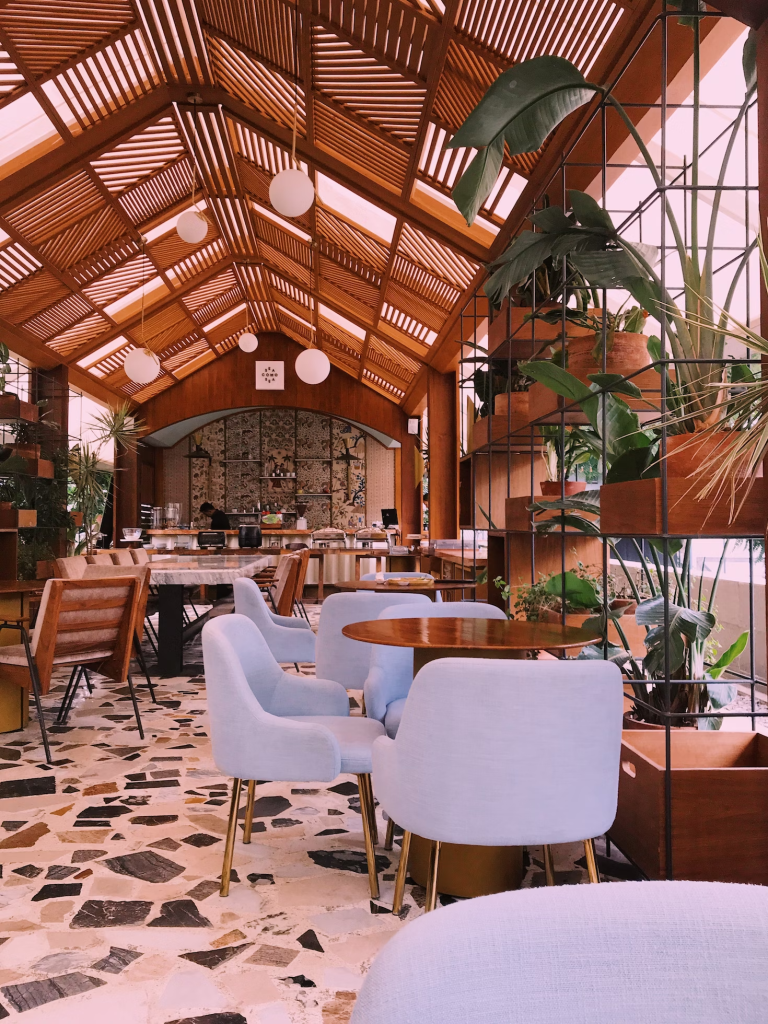
1. Fine Dining Restaurants
Fine dining establishments represent the pinnacle of culinary excellence and sophistication. They offer meticulously crafted dishes, exquisite presentation, and impeccable service. Often characterized by elegant décor, formal dress codes, and extensive wine lists, fine dining restaurants provide a memorable experience that transcends mere sustenance.
2. Casual Dining
Casual dining strikes a balance between quality cuisine and a relaxed, informal setting. These restaurants are popular for everyday meals, family gatherings, and casual dates. Patrons can expect a diverse menu, friendly service, and a comfortable ambience, making casual dining a go-to choice for a wide range of diners.
3. Fast Food Restaurants
Fast food restaurants are known for their quick service and standardized menu offerings. They cater to the on-the-go lifestyle, providing convenient and affordable options. With recognizable brands and streamlined operations, these establishments have become a ubiquitous part of modern life.
4. Cafés and Coffee Shops
Cafés are cherished spaces for socializing, working, or simply enjoying a cup of coffee or tea. They often offer a selection of pastries, light snacks, and sandwiches in addition to beverages. The cozy atmosphere and free Wi-Fi make cafés popular spots for both solitary introspection and lively gatherings.
5. Ethnic and Specialty Restaurants
These restaurants showcase the diverse flavours of the world, offering cuisines from various regions and cultures. Whether it’s a bustling Chinese eatery, a vibrant Mexican taqueria, or a refined French bistro, ethnic and specialty restaurants provide a passport to global gastronomy.
6. Buffet Restaurants
Buffet-style dining allows patrons to serve themselves from a range of dishes laid out on a counter or table. This format offers a wide variety of options, making it an ideal choice for large groups or those with diverse tastes. Buffet restaurants can be found in settings ranging from upscale hotels to casual eateries.
7. Pop-Up Restaurants
Pop-up restaurants are temporary dining experiences, often hosted in unconventional locations like warehouses, rooftops, or even parks. They are known for their creativity, offering unique menus and atmospheres that challenge conventional dining norms. Pop-up restaurants are a testament to the evolving nature of culinary art.
8. Food Trucks and Street Food Stalls
Food trucks and street food stalls bring gourmet cuisine to the streets, offering an array of dishes in a convenient, portable format. These mobile eateries cater to food enthusiasts seeking eclectic and often exotic flavours, all within arm’s reach.
9. Vegetarian and Vegan Restaurants
With a growing awareness of dietary preferences and environmental concerns, vegetarian and vegan restaurants have gained popularity. These establishments offer plant-based menus that cater to individuals seeking ethically and sustainably sourced options.
10. Gastropubs
Combining the convivial atmosphere of a pub with the culinary prowess of a restaurant, gastropubs focus on elevated pub fare. They often feature inventive menus, craft beers, and a cozy ambience, making them popular destinations for those seeking a casual yet refined dining experience.
What Are The Categories Of Meals In A Restaurant?
In a restaurant, meals are typically categorized based on the time of day and the type of food being served. The main meal categories are:
1. Breakfast:
Breakfast is often hailed as the most important meal of the day, providing the essential nutrients and energy needed to kickstart the morning. It encompasses a wide range of dishes that vary across cultures and regions. This category includes dishes typically served in the morning, such as eggs, pancakes, cereals, pastries, and various breakfast meats like bacon and sausage.
Remember, breakfast offerings may vary based on the region, cultural influences, and the style of the restaurant. Some establishments may offer a combination of these items to create unique and diverse breakfast menus.
2. Brunch:
Brunch, a delightful amalgamation of breakfast and lunch, has become a beloved dining occasion for many. It’s typically enjoyed during late morning to early afternoon hours, offering a leisurely and indulgent experience. Brunch menus may include a mix of breakfast and lunch items like omelettes, sandwiches, salads, and more.
These are just a few examples of the many delightful dishes that can make up a brunch menu. The beauty of brunch lies in its ability to cater to a wide range of tastes and preferences, making it a favourite for weekend gatherings, special occasions, or leisurely mornings.
3. Lunch:
Lunch, a midday meal, offers a wide array of options to satisfy various tastes and appetites. It is often seen as a more substantial meal compared to breakfast. Lunch menus typically feature a variety of salads, sandwiches, soups, and smaller-sized entrees.
These lunch options cater to a wide range of tastes, dietary preferences, and cultural influences, making it easy to find something satisfying and enjoyable for everyone. Whether it’s a quick bite during a workday or a leisurely weekend lunch with friends, the options are plentiful.
4. Dinner:
Dinner is often considered the main meal of the day, offering a wider variety of options compared to other meals. It is typically enjoyed in the evening and can range from casual to fine dining. Dinner menus are generally more extensive and may include a wider range of dishes, including more elaborate or complex options.
These dinner options cater to a diverse range of tastes and preferences, making it possible to enjoy a memorable and satisfying meal, whether it’s for a special occasion or a casual night out.
5. Appetizers (Starters):
Appetizers, also known as starters, are the opening act of a meal, designed to tantalize the taste buds and prepare diners for the main course. They come in various forms, from light salads to indulgent small plates. They can include items like soups, salads, small plates, or finger foods.
These appetizers set the stage for a memorable dining experience, offering a diverse range of flavours, textures, and cultural influences. They’re a wonderful way to explore different tastes and share a communal dining experience with friends and family.
6. Entrees (Mains):
Entrees, also known as main courses, are the central focus of a meal and often represent the heart of the dining experience. They encompass a wide range of dishes, from hearty meats to flavorful vegetarian options. The central course of a meal, often featuring a protein (such as meat, fish, or plant-based options) served with accompanying sides like vegetables, starches, or grains.
These entrees cater to a wide range of tastes and dietary preferences, making it possible to enjoy a memorable and satisfying main course, whether it’s for a special occasion or a casual dining experience.
7. Desserts:
Desserts are the sweet conclusion to a meal, offering a delightful array of flavours, textures, and presentations. From decadent cakes to refreshing fruit concoctions, there’s a dessert to suit every palate.
These desserts offer a sweet finale to a dining experience, ranging from comforting classics to sophisticated creations. Whether you have a penchant for chocolate, a love for fruit-forward flavours, or a taste for creamy indulgences, there’s a dessert to satisfy every sweet tooth.
Conclusion
The world of restaurants is a vibrant tapestry of culinary experiences, each offering its unique blend of flavours, ambience, and culture. Whether you’re savouring a five-course meal in a fine dining establishment or grabbing a quick bite from a food truck, the diversity of restaurants ensures that there’s something to cater to every palate and occasion.
So, the next time you dine out, take a moment to appreciate the rich variety of options available and savour the experience to the fullest.
Looking for some of the best restaurants in Melbourne? check my site.
Most Popular Cuisines In Australia
Australia, often hailed as a cultural melting pot, mirrors its diverse populace through its culinary landscape. With influences ranging from Indigenous traditions to European, Asian, and Middle Eastern cultures, Australian cuisine is a vibrant tapestry of flavours and techniques. In this article, we will delve into some of the most popular cuisines that have left an indelible mark on the Australian culinary scene.
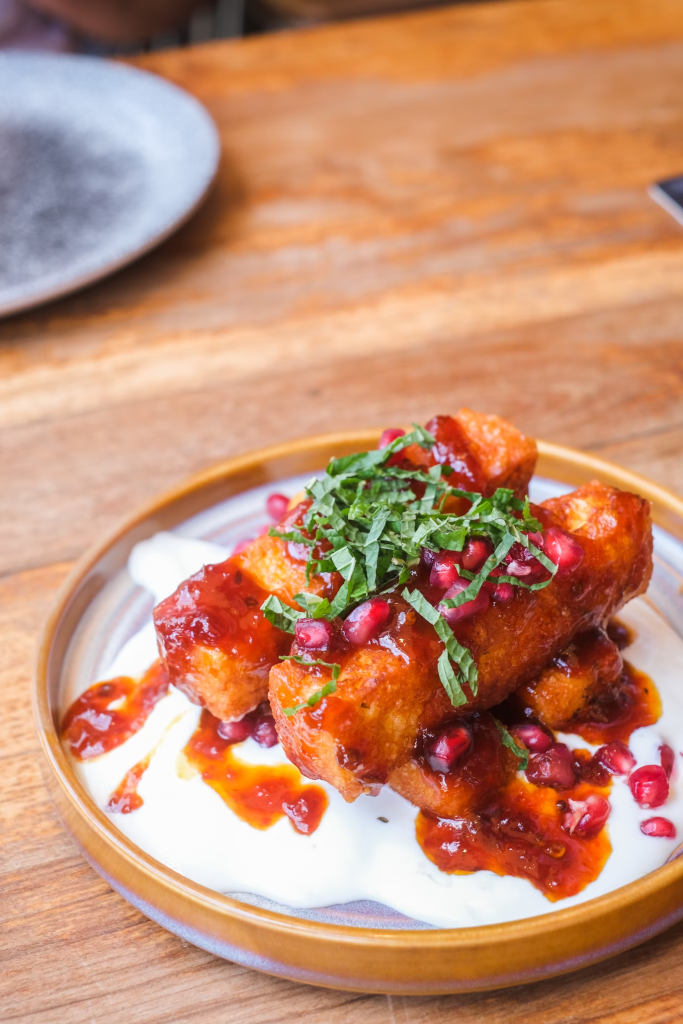
1. Modern Australian Cuisine
Modern Australian cuisine is a fusion of various culinary traditions, characterized by the use of fresh, local produce and a focus on innovative techniques. It emerged in the late 20th century, blending influences from European and Asian cuisines. The emphasis on high-quality ingredients and creative presentation has earned it a special place in the hearts of Australians.
Dishes like Barramundi with Lemon Myrtle, Kangaroo Carpaccio, and Pavlova are quintessential examples of this genre. Additionally, the farm-to-table movement, which prioritizes locally sourced, seasonal ingredients, has further propelled Modern Australian cuisine to the forefront of the culinary world.
2. Italian Cuisine
Italian cuisine holds enduring popularity in Australia. Waves of Italian immigrants brought with them a rich culinary heritage that has become an integral part of Australian gastronomy. Pasta, pizza, risotto, and hearty dishes like Osso Buco have found a permanent place on Australian dinner tables.
Melbourne, often hailed as the culinary capital of Australia, is renowned for its Italian eateries. Lygon Street, in particular, is celebrated for its abundance of authentic Italian restaurants, offering everything from traditional Neapolitan-style pizzas to exquisite handmade pasta.
3. Asian Influences
Asian cuisines have significantly shaped the Australian palate. The influx of immigrants from countries like China, Vietnam, Thailand, and Japan has led to a proliferation of Asian eateries across the nation. Chinese cuisine, with its diverse regional styles, is a perennial favourite. From dim sum to Peking duck, Australians relish the diverse offerings of Chinese kitchens.
Japanese cuisine, known for its precision and simplicity, has also gained a devoted following. Sushi, sashimi, and ramen have become staple choices for many Australians seeking a light and healthy dining option.
4. Mediterranean Delights
The Mediterranean diet, renowned for its health benefits and vibrant flavours, has captivated the Australian palate. Greek cuisine, with its emphasis on olive oil, vegetables, and grilled meats, has become a beloved choice for both casual and celebratory dining. Dishes like moussaka, souvlaki, and baklava have entrenched themselves in the Australian culinary lexicon.
Similarly, Spanish tapas and Italian antipasti have found favour among those seeking a convivial, communal dining experience. The bold flavours of olives, cured meats, and cheeses have become a cherished part of Australian dining culture.
5. Middle Eastern and North African Influences
The aromatic spices and bold flavours of Middle Eastern and North African cuisines have made a significant impact on the Australian culinary landscape. Dishes like falafel, hummus, kebabs, and tagines have become popular choices for diners seeking a taste of the exotic.
Lebanese cuisine, in particular, has a strong presence in Australian cities. From mezze platters to succulent grilled meats, Lebanese restaurants offer a rich tapestry of flavours that have been embraced by Australians.
6. Indigenous Cuisine
Acknowledging and celebrating the Indigenous culinary heritage of Australia is essential in understanding the country’s gastronomic evolution. Bush tucker, which encompasses a range of native ingredients like kangaroo, emu, quandong, and wattleseed, forms the basis of Indigenous cuisine.
Modern chefs are increasingly incorporating these ingredients into their dishes, creating a fusion of traditional and contemporary flavours.
Furthermore, the revival of Indigenous cooking techniques, such as the use of smoke and native spices, has garnered attention and admiration from the culinary world.
What Are 3 Popular Foods In Australia?
Three popular foods in Australia are:
1. Meat Pies:
Meat pies are an iconic dish in Australian cuisine, deeply ingrained in the culinary culture of the country. They are considered a comfort food and are widely loved by Australians of all ages. Here’s a closer look at this beloved dish:
Origins and History:
The origins of the meat pie can be traced back to early British settlers who brought with them a tradition of savoury pies. These pies were practical and portable, making them suitable for early Australian life, especially among miners and labourers.
Ingredients and Preparation:
The classic Australian meat pie consists of a flaky pastry crust filled with a mixture of diced or minced meat, typically beef, along with gravy, onions, and various seasonings. The choice of meat can vary, and some variations include lamb or a mixture of meats.
The filling is often enhanced with flavours like Worcestershire sauce, tomato paste, and herbs like rosemary and thyme. Vegetables like carrots and peas may also be included for added texture and flavour.
Serving and Accompaniments:
Meat pies are often enjoyed with a dollop of tomato sauce (ketchup), though preferences may vary. They can be found in a variety of settings, from corner bakeries and take-out shops to sporting events and picnics.
In addition to tomato sauce, they can also be served with mashed potatoes, mushy peas, or a side salad, depending on personal preference.
Regional Variations:
Different regions in Australia may have their unique twists on the classic meat pie. For instance, in South Australia, the “pie floater” is a popular variation where a meat pie is served in a bowl of pea soup.
Cultural Significance:
Meat pies hold a special place in Australian culture. They are often associated with sports events, and they’re a common choice for fans at rugby, football, and cricket matches. The “pie and sauce” is a classic and cherished snack for many Australians.
Beyond Tradition:
While the classic meat pie remains immensely popular, contemporary chefs and bakers have also started to experiment with gourmet variations, incorporating different meats, sauces, and pastry types to create unique and innovative takes on this beloved dish.
The meat pie is a beloved and iconic dish in Australia, deeply woven into the cultural fabric of the country. Its humble yet hearty nature, combined with its wide availability, has solidified its status as a culinary treasure cherished by Australians across the nation.
2. Vegemite:
Vegemite is a quintessential Australian condiment, known for its distinctive savoury flavor and deep cultural significance. Here, we explore the history, ingredients, and cultural impact of this beloved spread.
Origins and History:
Vegemite was first introduced in the 1920s by Fred Walker & Co. (later known as the Kraft Food Company) in Melbourne, Australia. It was created by Dr Cyril Percy Callister, a chemist and food technologist, as a way to utilize leftover brewer’s yeast extract, a byproduct of beer production. The spread was initially named “Parwill” but was later rebranded as “Vegemite” in 1923.
Ingredients and Production:
Vegemite is made from a blend of yeast extract, and various vegetable and spice additives, and is enriched with B vitamins, particularly B1, B2, B3, and folate. The primary ingredient, yeast extract, gives Vegemite its distinctive umami-rich and salty flavour. It is known for being a vegetarian and vegan-friendly food source.
The production process involves the concentration of yeast extract, followed by the addition of specific flavourings and seasonings. The final product is a thick, dark brown paste with a concentrated, salty taste.
Consumption and Usage:
Vegemite is typically spread thinly on bread, crackers, or toast, usually with butter or margarine. It can also be used in various recipes, such as soups, stews, and marinades, to impart a unique savoury flavour. Some creative culinary enthusiasts have even incorporated Vegemite into dishes like pasta sauces and meat marinades.
Cultural Significance:
Vegemite holds a special place in Australian culture. It is considered a national icon, often evoking a strong sense of nostalgia and patriotism. The “Vegemite sandwich” is a classic and simple meal for many Australians, especially children.
Furthermore, Vegemite has been immortalized in popular culture through songs, advertisements, and even as a symbol of Australian identity. The jingle “We’re Happy Little Vegemites” from a famous advertising campaign in the 1950s remains etched in the memories of generations.
Nutritional Value:
Vegemite is a nutrient-dense food source, containing essential B vitamins, which are crucial for energy metabolism and overall health. It is also relatively low in fat and calories, making it a popular choice for a quick, nutritious snack.
International Reception:
While Vegemite is an Australian icon, its strong, savoury flavour can be an acquired taste for those unfamiliar with it. Some international audiences may find it intense compared to sweeter spreads like jam or peanut butter. Nevertheless, it has gained a following among global consumers interested in exploring diverse culinary experiences.
In summary, Vegemite is more than just a spread—it’s a cultural touchstone, a symbol of Australian identity, and a nutritious addition to many Australians’ diets. Its distinctive taste and rich history continue to make it a cherished staple in households across the country.
3. Barbecue (Barbie):
Barbecue, affectionately known as “barbie” in Australia, is a cherished culinary tradition that holds a special place in the hearts of Australians. Here, we delve into the origins, cultural significance, and diverse manifestations of this popular outdoor cooking style.
Origins and History:
The practice of outdoor grilling and barbecuing can be traced back to Indigenous Australian communities who used traditional methods to cook meats over open flames. With the arrival of European settlers, this cooking technique was embraced and evolved, leading to the development of modern barbecuing in Australia.
Culinary Technique:
Australians have perfected the art of barbecuing, which involves grilling various meats and seafood outdoors on a grill or barbecue pit. The method typically uses charcoal, wood, or gas as the heat source. This technique imparts a distinctive smoky flavour to the food, creating a unique and delectable taste.
Popular Barbecue Items:
The choice of meats for the barbie is diverse, ranging from sausages, steaks, and lamb chops to prawns, fish, and even kangaroo. Marinades and seasonings are used to enhance flavours, with popular options including garlic, rosemary, lemon, and various spice blends.
Accompaniments:
Barbecue gatherings are often accompanied by an array of side dishes. These may include salads, coleslaw, baked potatoes, corn on the cob, and a variety of sauces and condiments to complement the grilled meats. A Classic Australian barbecue often features a mix of flavours, textures, and tastes to cater to various preferences.
Cultural Significance:
Barbecues are more than just a method of cooking; they represent a cherished social and cultural tradition in Australia. They provide an opportunity for friends and families to come together in a relaxed and informal setting, fostering a sense of community and camaraderie.
Events and Celebrations:
Barbecues are an integral part of Australian celebrations and gatherings. From casual weekend cookouts in suburban backyards to large-scale events like the “Aussie BBQ” held on public holidays, barbecuing is a versatile culinary practice that adapts to various occasions.
Regional Influences:
Different regions of Australia may have their unique barbecue styles and preferences. For instance, South Australia is known for its distinctive “braai” (barbecue) culture, influenced by its strong German heritage.
Innovation and Gourmet Barbecuing:
While traditional barbecuing remains immensely popular, contemporary chefs and enthusiasts have embraced innovation, experimenting with different marinades, woods, and cooking techniques to create gourmet barbecue experiences. This includes slow-cooked, smoked meats and fusion dishes that showcase the versatility of the barbecue.
The Australian barbecue, or “barbie,” is more than just a cooking method; it’s a cultural phenomenon that brings people together, celebrates the great outdoors, and embodies the laid-back spirit of Australia. It’s a culinary tradition that continues to evolve while remaining a cherished and unifying aspect of Australian culture.
Conclusion
Australia’s culinary landscape is a testament to its multicultural society. The convergence of diverse culinary traditions has birthed a unique and vibrant food culture. From the innovative techniques of Modern Australian cuisine to the comforting familiarity of Italian pasta, the richness of Asian flavours, and the boldness of Middle Eastern spices, Australia’s most popular cuisines offer a delightful journey for the palate.
Embracing this diversity not only enriches the dining experience but also reflects the harmonious coexistence of cultures in this great southern land.
Spicy, yummy & Tasty
Lorem ipsum dolor sit amet, consectetur adipiscing elit, sed do eiusmod tempor incididunt ut labore et dolore magna aliqua.
takeout menu
Lorem ipsum dolor sit amet, consectetur adipiscing elit.







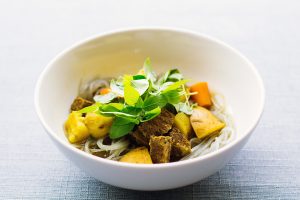
Lorem ipsum dolor sit amet, consectetur adipiscing elit, sed do eiusmod tempor incididunt ut labore et dolore magna aliqua. Ac turpis egestas integer eget aliquet nibh praesent tristique. In cursus turpis massa tincidunt dui.

